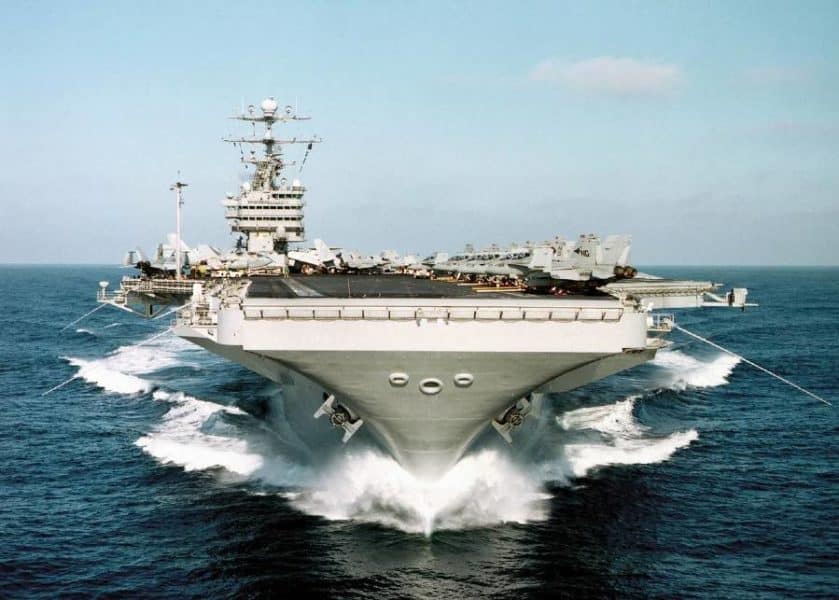What if aircraft carriers could rely on the most abundant of local resources—seawater—to fuel the planes on board?
Thanks to seawater-to-fuel technology that has been in development for several years, scientists are able to use the onboard nuclear reactor and harness the carbon dioxide and hydrogen from seawater to create a liquid fuel that can power a jet engine. The technology would allow aircraft carriers to remain in continuous operation and avoid relying on tanker ships to replenish their fuel.
However, designing catalysts that can effectively create jet fuel from these common compounds is a difficult and costly process.
Researchers from the University of Pittsburgh and the University of Rochester seek to improve this process in a project that recently received $300,000 from the Department of Defense Office of Naval Research. The project, led by the University of Rochester’s Marc Porosoff and Pitt’s Giannis Mpourmpakis, will refine a crucial step in the seawater-to-fuel process, making it more energy efficient, safer, and scalable.
The first step of fuel synthesis is converting the carbon dioxide (CO2) extracted from seawater into carbon monoxide (CO). Last summer, the team successfully demonstrated that molybdenum carbide catalysts efficiently and reliably convert CO2 to CO, achieving this critical first step in turning seawater into fuel. The newly funded project will expand on the previous work, seeking to further hydrogenate the carbon monoxide into usable fuels using Fischer-Tropsch synthesis.
“Our goal with this project is to tune hydrocarbon selectivity during the hydrogenation of a mixture of CO and CO2,” said Porosoff, who is an assistant professor of chemical engineering at the University of Rochester and principal investigator of the project. “To do that, we’ll design, synthesize and test bimetallic, zeolite-based catalysts that selectively hydrogenate CO and create specific compounds, like olefins and heavier hydrocarbons, that can be used as fuels.”
Zeolites—minerals that contain aluminum and silicon—are commonly used as commercial catalysts. The researchers expect that catalysts based on zeolites and bimetallic particles will result in enhanced activity, selectivity and stability in the seawater-to-fuel application. The catalysts offer several other benefits, as well: They avoid reliance on expensive and rare precious metals and are highly tunable, meaning that researchers can control the acid-base properties to stabilize the desired reaction.
Mpourmpakis, associate professor of chemical engineering at Pitt’s Swanson School of Engineering and co-PI on the project, leads the Computer-Aided Nano and Energy Lab (CANELa), which specializes in using theory and computation to investigate the physicochemical properties of nanomaterials for applications in catalysis, green energy generation and storage, and materials engineering. To test their hypothesis, Porosoff and Mpourmpakis will use computational modeling and machine learning to identify the characteristics of catalysts most likely to achieve their goal: the selective hydrogenation of CO in a mixture of CO and CO2, limiting unwanted reactions that make less useful compounds like methane.
“This work will combine computational and experimental approaches to hopefully result in significant time, energy and cost savings over conventional experimental approaches,” said Mpourmpakis, who is also the Bicentennial Alumni Faculty Fellow at Pitt. “These control experiments are essential for the design of an integrated, modular system, and enable the implementation of the ‘seawater to fuel’ process in a way that is safe and efficient for the U.S. Navy.”
The two-year project is titled “Selective CO Hydrogenation Over Bimetallic Nanoparticles” and began on April 1st 2021.
Maggie Pavlick, 5/11/2021
Contact: Maggie Pavlick


